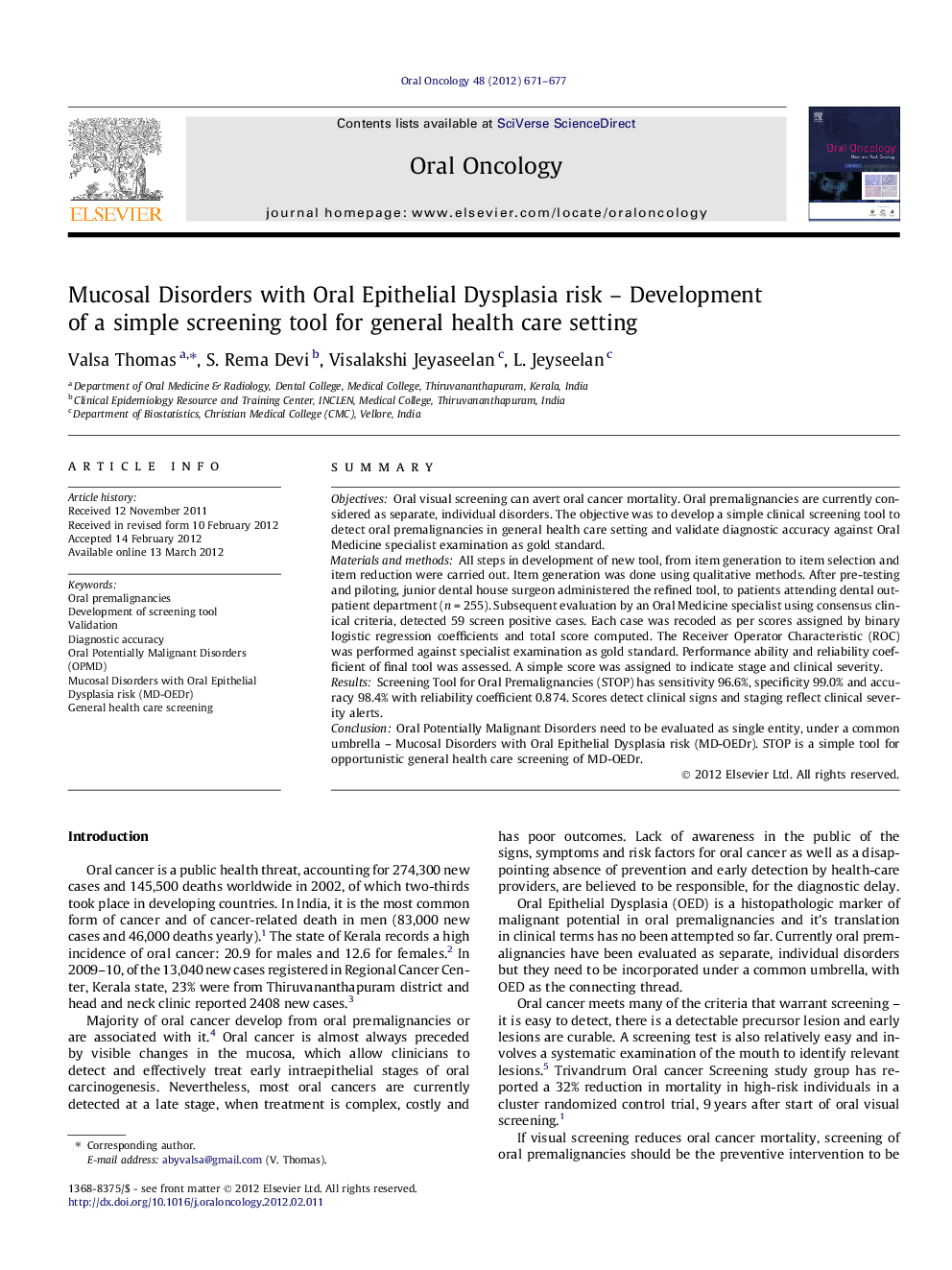| Article ID | Journal | Published Year | Pages | File Type |
|---|---|---|---|---|
| 3164615 | Oral Oncology | 2012 | 7 Pages |
SummaryObjectivesOral visual screening can avert oral cancer mortality. Oral premalignancies are currently considered as separate, individual disorders. The objective was to develop a simple clinical screening tool to detect oral premalignancies in general health care setting and validate diagnostic accuracy against Oral Medicine specialist examination as gold standard.Materials and methodsAll steps in development of new tool, from item generation to item selection and item reduction were carried out. Item generation was done using qualitative methods. After pre-testing and piloting, junior dental house surgeon administered the refined tool, to patients attending dental outpatient department (n = 255). Subsequent evaluation by an Oral Medicine specialist using consensus clinical criteria, detected 59 screen positive cases. Each case was recoded as per scores assigned by binary logistic regression coefficients and total score computed. The Receiver Operator Characteristic (ROC) was performed against specialist examination as gold standard. Performance ability and reliability coefficient of final tool was assessed. A simple score was assigned to indicate stage and clinical severity.ResultsScreening Tool for Oral Premalignancies (STOP) has sensitivity 96.6%, specificity 99.0% and accuracy 98.4% with reliability coefficient 0.874. Scores detect clinical signs and staging reflect clinical severity alerts.ConclusionOral Potentially Malignant Disorders need to be evaluated as single entity, under a common umbrella – Mucosal Disorders with Oral Epithelial Dysplasia risk (MD-OEDr). STOP is a simple tool for opportunistic general health care screening of MD-OEDr.
